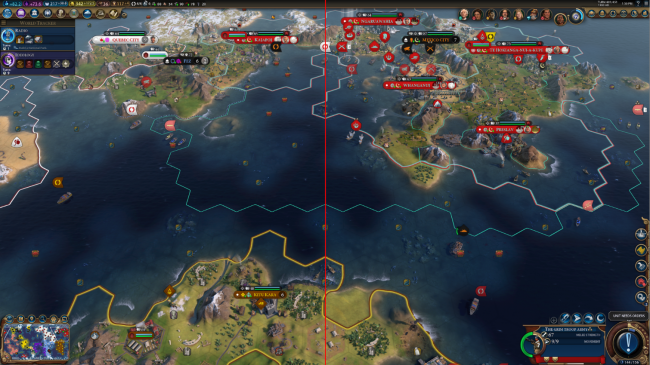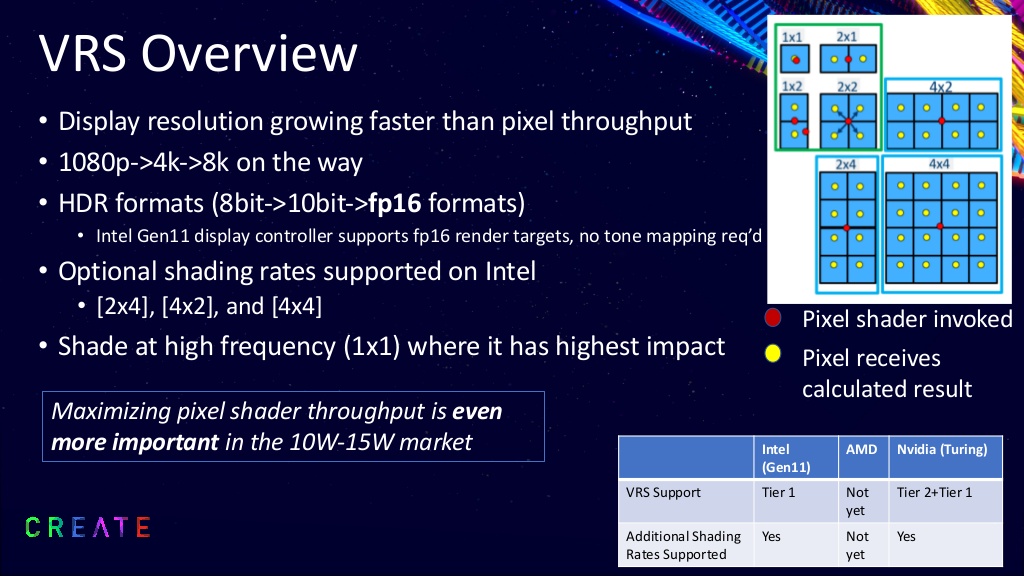What Is Variable Rate Shading? A Basic Definition of Nvidia VRS
Variable rate shading (VRS) is a type of rendering technique used by Nvidia graphics cards based on the Turing (RTX 20-series and GTX 16-series cards) and Ampere (RTX 30-series) architectures, as well as Intel's Gen11 graphics architecture, which arrived in laptops in 2019 via Intel's 10nm Ice Lake CPUs. The point of VRS is to boost performance by allowing the GPU to use varying amounts of processing power within the same frame to render different parts of the image. With VRS, a GPU can use its full shading processing power for more complex parts of an image and less power for simpler parts of the image. VRS works with games and software developed to support the technology and puts less demand on the GPU used to run said programs.
Below is a video from 3DMark showing the visual and performance differences between VRS being on and VRS being off.
AMD's alternative is called FidelityFX Variable Shading, also called VS. It differs by being open source, which AMD claims will allow for easier implementation in games. AMD VS "works by analyzing luminance variance in the previous frame and uses motion vectors to generate a shading rate image," according to AMD.
How Does VRS Work?
GPUs have a component called pixel shaders, which are each assigned a pixel to dictate its visual characteristics. More detail calls for more graphics power and vice versa.
VRS changes the number of pixels one pixel shader operation can impact. As a result, one pixel shader operation can be applied to a whole area of pixels -- a 16 x 16 pixel area, to be exact. That means developers can reduce the visual fidelity in appropriate areas of the frame, so it’s less demanding on a PC’s graphics card. That can boost framerates and also let lower-end GPUs run a game better than it would without VRS.
VRS also comes in handy when your PC is powering your best VR headset. Instead of rendering pixels that won’t even be seen in the headset’s display, developers can implement VRS, so the GPU will more closely render only the areas that'll be seen in the headset’s display.
VRS is supported by DirectX 12, a group of APIs (application programming interfaces) Microsoft made that communicates with a PC’s components for rendering 2D and 3D graphics, video rendering and playing audio. It also works with the older DirectX 11, OpenGL and Vulkan. Nvidia says it's working on integrating VRS with Unreal Engine and Unity.
Get Tom's Hardware's best news and in-depth reviews, straight to your inbox.
You can find a detailed, technical explanation of VRS from Nvidia in the video below:
This article is part of the Tom's Hardware Glossary.
Further reading:

Scharon Harding has over a decade of experience reporting on technology with a special affinity for gaming peripherals (especially monitors), laptops, and virtual reality. Previously, she covered business technology, including hardware, software, cyber security, cloud, and other IT happenings, at Channelnomics, with bylines at CRN UK.


